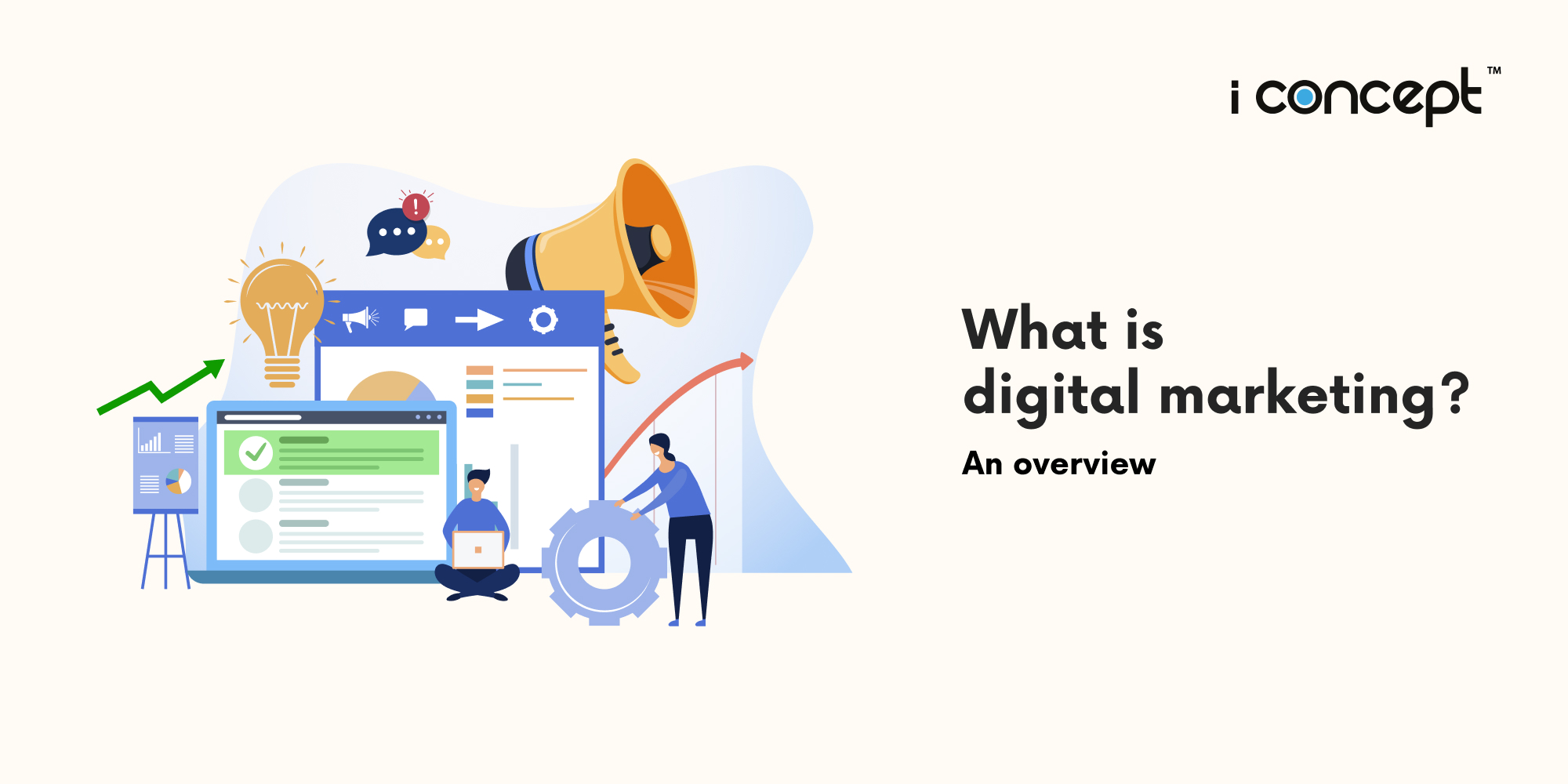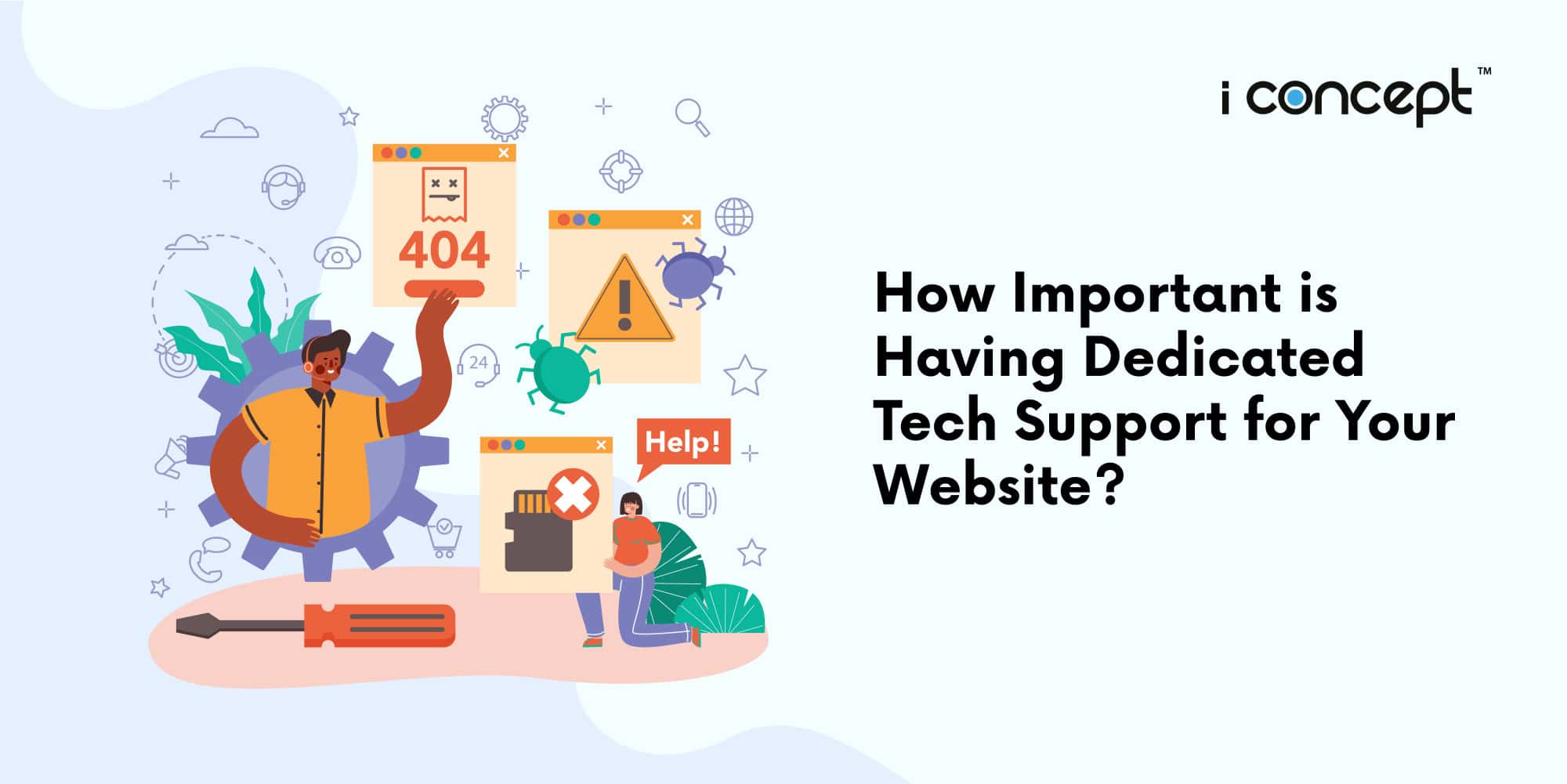Today, everything is digital, and digital marketing has been integrated into almost every aspect of business, fundamentally changing how businesses communicate with, and deliver value to their customers.
Digital marketing strategies help marketers define goals, target an audience, and develop a digital marketing plan that best reaches that audience. These strategies provide direction for a given campaign or program and a framework for evaluating outcomes.
Let I Concept Singapore take you through all you need to know about digital marketing and the different strategies you may opt for your business.
How does digital marketing work?
There are a number of ways to approach a digital marketing campaign. As a digital marketer, you have in your toolbox a wide range of tactics, strategies, and channels that can be employed to connect with your audience. Generally speaking, digital marketing campaigns involve several common steps:
- Define your marketing goals
Digital marketing is a wide-ranging field. So it’s important to establish your goals before starting a digital marketing campaign. For example, do you want to build brand awareness? Acquire new customers? Focus on retention and customer loyalty? Outlining goals helps you tailor your strategy and budget to maximise your impact.
- Identify your target audience
Whose attention are you trying to get? The more details that you can find out about your target audience (age, location, income, etc.) the easier it will be to determine how to connect with them.
- Identify the right marketing channels and marketing tactics
Now that you know who you want to reach, you need to decide how (and for how much) you want to reach them. Suppose you’re a B2C (Brand to Consumer) digital marketer trying to connect with younger customers. In that case, you might allocate more of your budget to social media advertising on specific platforms rather than put the majority of your efforts (and money) into blog publishing.
- Develop and optimise content and messaging for each channel
Analyse your data and try to find out as much as you can about your audience. For example, if you know that your customers prefer browsing on their phone versus a laptop, the content they receive will need to be optimised for mobile viewing. But that may not be enough. Customers interact with brands across a variety of channels in a nonlinear fashion. So you need to make sure that every piece of content has a consistent brand voice and messaging. Consistency prevents confusion about what your brand is and the value you provide.
- Campaign measurement across key metrics
Measure across key metrics and make adjustments based on those results. If you don’t measure your performance based on the key metrics you defined earlier, how will you know whether the campaign is doing well or continuously improving? Measuring results over time ensures that you’re connecting with customers, driving loyalty, and building brand advocacy.
What are the different digital marketing channels and strategies?
From the inbox to social networks — and across laptops, tablets, and smartphones — today’s consumers move seamlessly and fully expect you to be there with them, providing anintegrated experience.
To help you build a successful cross-channel marketing strategy, here are in-depth descriptions of the most widely used digital marketing channels:
Email marketing
Email marketing is one of the oldest and best-known forms of digital marketing. Email content can include information about your products and services, news about your company and events, personalised offers, customer success stories, links to case studies, and technical or business briefs.
Value is critical to ensure that your emails are opened and read — and not deleted right away. Personalised content and relevant offers go a long way to boost engagement. Email marketing is part art and part science. Your emails and digital assets need to be appealing and engaging, but there needs to be a balance between sending too many emails and not sending enough.
Video marketing
Video is one of the most powerful digital marketing media available. People love videos. They watch videos for fun and research, and they share videos. In fact, YouTube reported more than two billion monthly logged-in viewers.
Video marketing builds brand awareness, boosts digital traffic, and increases conversion rates. You need to showcase your brand identity through your video content. Sharing video is the key to getting more eyes on your content. That’s why you’ll want to leverage third-party sites, such as YouTube, and promote videos on your website and social media channels. Encourage others to share your videos.
Keep your videos short and to the point. Attention spans are short, so the key is to provide great content in an engaging manner.
Social media marketing
Social media is a great way to reach a specific, targeted audience and connect directly with customers, potential customers, and partners. Which social media platform(s) you use depends on who you want to target. Facebook is still the largest social media platform worldwide. Instagram and TikTok are incredibly popular with millennial and Gen Z consumers, and LinkedIn is a great place to connect with B2B (brand-to-brand) buyers in the early stages of the buying cycle.
Every social media platform features different types of content, but all are mostly visual-focused. So as you create content, always keep in mind how you want to distribute it through social media, and then adjust accordingly. More importantly, keep to your brand identity and showcase your branding to leave good impressions.
Different platforms will continue to emerge, so marketers must continuously adapt digital marketing tactics to make the most of every platform available.
Content marketing
Content marketing lets you personalise your outreach through digital copywriting and design skills, to connect with different prospects and customers as you present your message. The more personalised your content, the more likely it will interest, intrigue, and hold the person’s attention. However, your content must align with your targeted audience’s intent and interest; it must provide some value to drive engagement and conversions.
The types of content can include email copy, landing pages, infographics, ebooks, business briefs, banner ads, videos, text messages, commercials, newsletters, press releases, articles, blogs, and digital postcards. Content can (and should) be used across channels, but all of your content should have a consistent voice and message.
SEO, PPC and SEM
A good search engine optimisation (SEO) strategy optimises website content (landing pages, blogs, etc.) so that it appears higher and more often in search results, driving traffic to your content. Good SEO results depend on keywords and page optimisation. Using researched keywords and long-tail keywords (3+ word phrases) throughout your web content will improve SEO and provide the highest results in terms of traffic and conversion. Organically linking from high-authority third-party pages is another way to improve page rank and drive potential customers to your content.
Pay-per-click (PPC) advertising refers to paying for each click on a specific link. Search engines and most social media sites offer PPC opportunities. PPC ads will appear in your targeted customers’ and prospective customers’ feeds.
Search engine marketing (SEM) is a type of PPC advertising that can be quite impactful. It involves paying a search engine to show marketing messages and a link in a prominent position when visitors search on specific keywords.
Website design and marketing
Your website is often the first point of contact potential customers have with your company and brand. Great web design can promote the consistent branding of all digital assets. It should also make your website more search engine friendly, provide a great user experience, and improve the conversion rate (more clicks, sign-ups, etc.).
Affiliate marketing
Many bloggers and social media influencers are affiliate marketers, as they use their blogs and social media accounts to promote different products and services. It is a performance-based type of marketing. Affiliate marketers earn a commission for promoting certain products. The more visitors and customers these marketers bring in, the more money the affiliate will earn.
Digital marketing KPIs
Digital marketing key performance indicators (KPIs) are used to measure marketing campaign performance. Digital marketers can use a number of KPIs to track results. As you work through your strategy, determining which specific digital marketing KPIs to use makes it easier to determine targets and goals and to measure campaign performance, including the following data:
- First visit. Understand how people are finding your website and how engaged they are once they do.
- Returning visitors to website. Indicates engagement because visitors are coming back to your website (or landing page) to consume more content or take a specific action.
- Total visits. The number of single browsing sessions by individual visitors to your site.
- Total unique visits. The number of people who have visited your website or landing page.
- Web traffic source. Shows how people are finding your website or landing page.
- Click-through rate. The percentage of people who clicked on a CTA or link.
- Average time on page. The average amount of time all users spend on a single page.
- Marketing ROI (return on investment). How much revenue a marketing campaign is earning compared to the cost of running that campaign.
There are hundreds of possible KPIs you can use, depending on the types of campaigns you run and your brand’s objectives.
Benefits of digital marketing
Digital marketing tactics enable direct communication between companies and their customers, as those customers travel along their unique buying journeys. Digital marketing helps innovative marketers deliver the right content and offers at the right time, on the channels where customers spend most of their time. With the use of digital marketing KPIs, marketers can understand what strategies worked and how well they worked, helping to drive continuous improvement, boosting customer engagement, and improving marketing ROI.
Done well, digital marketing benefits both customers and companies. By appropriately personalising content and offers to each individual, customers feel that your brand understands their needs and can provide them with a valuable service or product. This ultimately deepens their trust, turning them into loyal brand advocates. There are many advantages of digital marketing for companies as well. These include:
- Increased reach. Most people start their buying journeys online, across a variety of different digital channels.
- Precise targeting. Marketers can reach more qualified buyers by leveraging SEO and social media strategies. This, in turn, boosts conversions, revenue and brand advocacy.
- Agility. It’s typically easier to amend and adjust digital marketing tactics if your goals change.
- Measurability. Digital marketing provides a greater degree of attribution so that marketers know which tactics truly drive growth.
Work out your digital marketing strategy with I Concept
Looking to explore digital marketing for your business but don’t quite know where to begin? Or are you seeking to expand your digital marketing efforts and need some assistance? Let I Concept Singapore, your choice digital agency, guide you through it all.
Our team of brand guardians and digital marketing strategists will walk you through the different approaches and build a strategy that best fits your current business model. From developing (and renewing) brand identity, through to creating an integrated omnichannel marketing, our dynamic team of creative designers, content creators and programmers can offer you the right advice.
Feel free to ask us anything and everything about your digital marketing.
